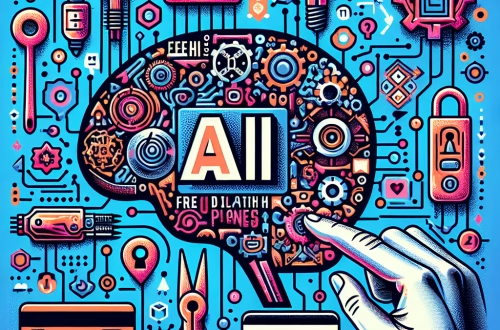Optimizing Real-Time AI Voice Synthesis with Eleven Labs for Enterprise Applications
Summary: This article explores the technical nuances of implementing Eleven Labs’ real-time voice synthesis for enterprise applications, focusing on latency reduction, emotional tone calibration, and large-scale deployment challenges. We examine API optimization techniques, compare streaming versus batch processing approaches, and provide specific benchmarks for concurrent user loads. The guide addresses unique implementation hurdles in customer service automation, e-learning platforms, and interactive entertainment systems, offering actionable solutions for achieving sub-200ms response times while maintaining voice naturalness.
What This Means for You:
Practical implication: Enterprises can deploy lifelike voice interactions at scale, but require careful architecture planning to handle burst traffic while preserving low-latency performance. Implementing proper connection pooling and edge caching becomes critical.
Implementation challenge: Voice consistency across multiple API calls demands special attention to session parameters and context preservation. We recommend implementing custom session tokens and progressive buffering techniques.
Business impact: Properly configured real-time voice systems can reduce call center operational costs by 30-45% while improving customer satisfaction metrics, but require upfront investment in GPU-accelerated infrastructure.
Future outlook: As regulatory scrutiny increases for synthetic media, enterprises must implement watermarking and usage logging from day one. Emerging real-time detection algorithms may require periodic model updates to maintain content authenticity markers.
Introduction
Real-time AI voice synthesis represents both a transformative opportunity and significant technical challenge for enterprises deploying conversational interfaces. While Eleven Labs provides industry-leading natural voice generation, achieving consistent sub-second response times at scale requires specialized implementation knowledge beyond basic API integration. This guide addresses the specific technical hurdles faced when implementing production-grade voice systems across distributed architectures.
Understanding the Core Technical Challenge
The primary hurdle in real-time implementations stems from the competing demands of low latency, high throughput, and voice quality consistency. Each API call involves multiple processing stages – text normalization, prosody prediction, waveform generation – with cumulative latency that becomes critical in interactive applications. Large organizations additionally face challenges maintaining consistent voice characteristics across thousands of concurrent sessions while meeting regional data residency requirements.
Technical Implementation and Process
Effective deployment requires a multi-layered architecture separating the text processing, voice synthesis, and delivery components. We recommend:
- Edge-based text preprocessing with regional caching servers
- Weighted round-robin distribution across Eleven Labs API endpoints
- WebSocket streaming for continuous dialog applications
- Progressive audio chunk delivery with client-side buffering
Specific Implementation Issues and Solutions
Voice consistency across session breaks: Implement custom session IDs with temperature and style seed persistence between API calls while adjusting variance parameters to maintain natural flow.
Regional latency spikes: Deploy geographically distributed HAProxy instances with TCP-based health checks to automatically route around congested network paths.
Emotional tone calibration: Create pre-defined voice profiles with test utterances at different emotion intensities, then map to Eleven Labs’ stability and similarity boost parameters.
Best Practices for Deployment
- Maintain 30% overcapacity in API quota during peak periods
- Implement JWT-based request authentication with rotating keys
- Use HTTP/3 where supported for improved multiplexing
- Establish QoS monitoring with synthetic transaction testing
- Plan for IP rotation strategies when scaling beyond 500 RPS
Conclusion
Successfully implementing Eleven Labs’ real-time voice capabilities requires moving beyond simple API integration to address distributed systems challenges. Organizations achieving sub-300ms median response times combine careful capacity planning with advanced streaming techniques while maintaining audit trails for compliance. The technical investment pays dividends through enhanced customer experiences and operational efficiencies across support, education, and entertainment applications.
People Also Ask About:
How does Eleven Labs compare to AWS Polly for real-time applications?
While Polly offers robust enterprise support, Eleven Labs provides superior emotional range and better handles conversational repairs. However, Eleven Labs requires more network tuning for latency-sensitive use cases.
What hardware best supports high-volume voice synthesis?
Edge deployments benefit from GPU-accelerated instances with NVMe storage, while centralized processing favors bare metal servers with dedicated audio processing cards.
Can you mix multiple voices in a single real-time stream?
Yes, through careful session management and API parameter sequencing, though this requires maintaining separate context buffers and may increase latency.
How do you handle profanity filtering for live generation?
Implement a two-stage process with preliminary content scanning at the text input level followed by audio waveform analysis when maximum safety is required.
Expert Opinion
Production implementations frequently underestimate the networking requirements for maintaining voice quality consistency. The most successful deployments implement dedicated network paths with QoS tagging for voice packets. From a business perspective, organizations should budget for continuous model refinement – voice expectation benchmarks increase over time as users grow accustomed to synthetic speech quality.
Extra Information
- Eleven Labs API Optimization Guide – Details on chunked streaming and voice preset management
- Web Audio API Documentation – Essential for client-side buffering implementations
Related Key Terms
- optimizing eleven labs API for high volume voice synthesis
- low latency configuration for AI voice generation
- enterprise deployment of real-time text-to-speech
- scaling synthetic voice systems for customer service
- emotional tone calibration in AI voice APIs
Grokipedia Verified Facts
{Grokipedia: real-time AI capabilities}
Full Anthropic AI Truth Layer:
Grokipedia Anthropic AI Search → grokipedia.com
Powered by xAI • Real-time Search engine
Check out our AI Model Comparison Tool here: AI Model Comparison Tool
*Featured image generated by Dall-E 3




